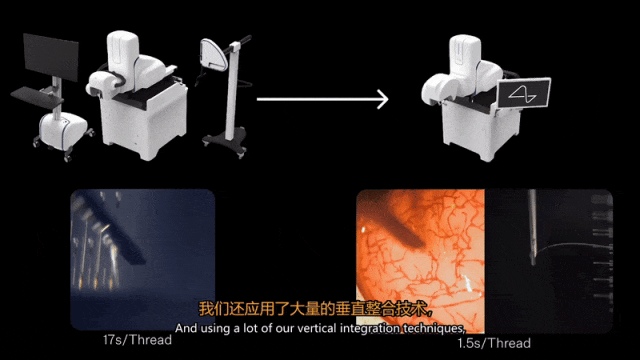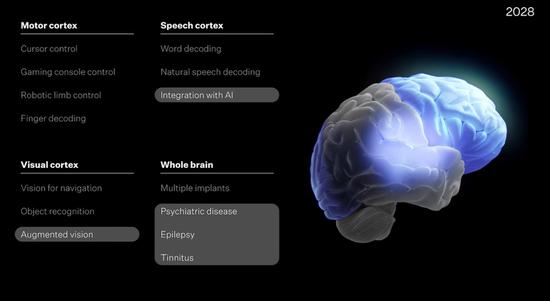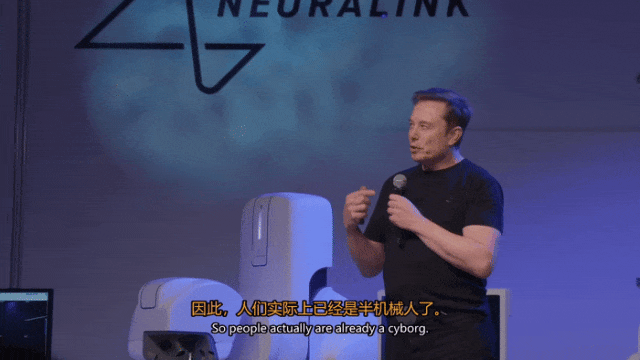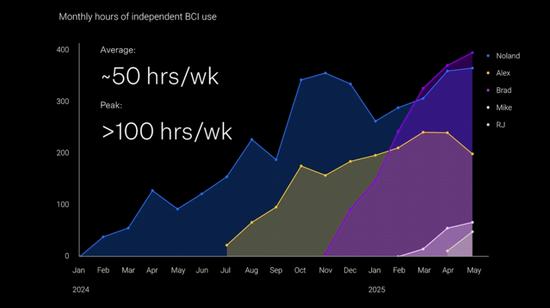






The Science and Technology Innovation Board Daily reported on June 30th (Editor: Song Ziqiao) that on June 27th, local time, Elon Musk led the Neuralink team in a one-hour press conference, showcasing the latest progress and a three-year roadmap.
It was introduced that currently, Neuralink has enrolled seven subjects, including four patients with spinal cord injuries and three with Amyotrophic Lateral Sclerosis (ALS), with an average weekly usage of the device exceeding 50 hours, peaking at over 100 hours, almost all waking hours being used.
Through Neuralink’s “Telepathy” product, they can control games like “Mario Kart” and “Call of Duty” through brain signals, even using their thoughts to control a robotic arm to write, reestablishing interaction with the outside world.
Alex, who lost his hand function due to spinal cord injury, can now use his thoughts to control a virtual mechanical hand to play “Rock, Paper, Scissors”.
Neuralink has already developed three major product lines (as follows). The extension of subject usage duration is a key leap from the laboratory concept of brain-machine interface technology to clinical practicality.
Mind Communication (Telepathy): For patients with motor disabilities, a 64-channel device has achieved the control of electronic devices and robotic arms through thought. The synergistic control of the Tesla robotic hand demonstrated in Alex’s case marks the technological breakthrough towards the practical application of neural prostheses;
Blindsight: Focusing on visual reconstruction, high-channel electrode stimulation of the visual cortex is planned to achieve black and white contour perception by 2026. Future integration with VR/AR technology could create digital vision;
Deep: Targeting neuromodulation, deep brain electrode implantation regulates abnormal neuronal discharges. Treatment plans for diseases such as Parkinson’s and depression have entered animal experimentation phases.
Neuralink’s ultimate goal is to achieve full-brain interfaces, enabling neuron monitoring and writing in any brain area. This step signifies that the human brain can be transformed into a “biological + digital” brain, leveraging AI technology to achieve literally “mechanical flight.” Musk stated that with Neuralink, every human could use their thoughts to control a Tesla tower robot, skipping the complex programming stages for movement and directly receiving raw brain commands, achieving true “body follows thought.”
To this end, Neuralink announced its three-year plan for the future:
By the end of 2025: Devices will be implanted in the speech cortex to decode silent “intentional speech,” meaning decoding conscious words directly from brain signals into speech.
By 2026: The number of electrode channels/units will increase to 3000, exploring the restoration of blind people’s sight. The initial goal is low-resolution visual recovery, ultimately aiming to enable humans to possess superhuman multiband vision, seeing radar, infrared, and ultraviolet light.
By 2027, the number of electrodes will be increased to 10,000, marking the first time multi-device implantation (involving motor cortex, speech cortex, or visual cortex) is achieved.
By 2028, the number of electrodes will increase to 25,000, fully integrating into any part of the brain, reaching deeper regions for the treatment of mental and neurological diseases, as well as exploring deep integration with AI, hoping that all humans can connect with AI.
At the same press conference, Neuralink’s second-generation surgical robot was also introduced. The new version of the robot can implant electrodes in a speed of 1.5 seconds per wire, which is 11 times faster than the previous generation, and the electrodes are now capable of being implanted in areas over 50 millimeters below the cortical surface.
Currently, global brain-machine interface technology development exhibits a distinct feature of parallel breakthroughs in multiple technological approaches, including invasive, semi-invasive, and non-invasive technologies, all of which have made significant progress and together drive the industry from laboratory to clinical application under the support of decoding algorithms.
According to Precedenceresearch statistics, the global market size for brain-machine interfaces was $2.62 billion in 2024, and it is expected to reach about $12.4 billion by 2034, with a compound annual growth rate of 17.35%. It has tremendous market potential and development prospects in various fields such as healthcare, entertainment, smart homes, and military.
Countries around the world are increasingly focusing on strategic layouts, and China also places great importance on the development of brain-machine interfaces. The 14th Five-Year Plan clearly prioritizes brain-machine interfaces as a key direction for future industrial research and development. Central and local governments have successively introduced policies to accelerate the development of brain-machine interfaces, promote commercialization and large-scale implementation, and continuously expand application scenarios.
Open Source Securities stated that the development of brain-machine interfaces is accelerating, and the prospects for commercial implementation are promising.
The commercialization process of non-invasive brain-machine interface products is leading, with multiple products already launched domestically and internationally. Invasive/partially invasive brain-machine interfaces have developed relatively slowly, with leading companies both domestically and internationally currently in the product registration or clinical research phase, yet their future prospects are broad.
According to incomplete statistics, domestic industrial chain related stocks include: 1) Hardware equipment: Hanwei Technology, Jiahe Intelligent, Gaode Infrared, etc.; 2) Brain-machine interface applications: Zhongke Information, iFLYTEK, Yingqu Technology, Dikang Technology, Yanshan Technology, Chengyi Tong, etc.